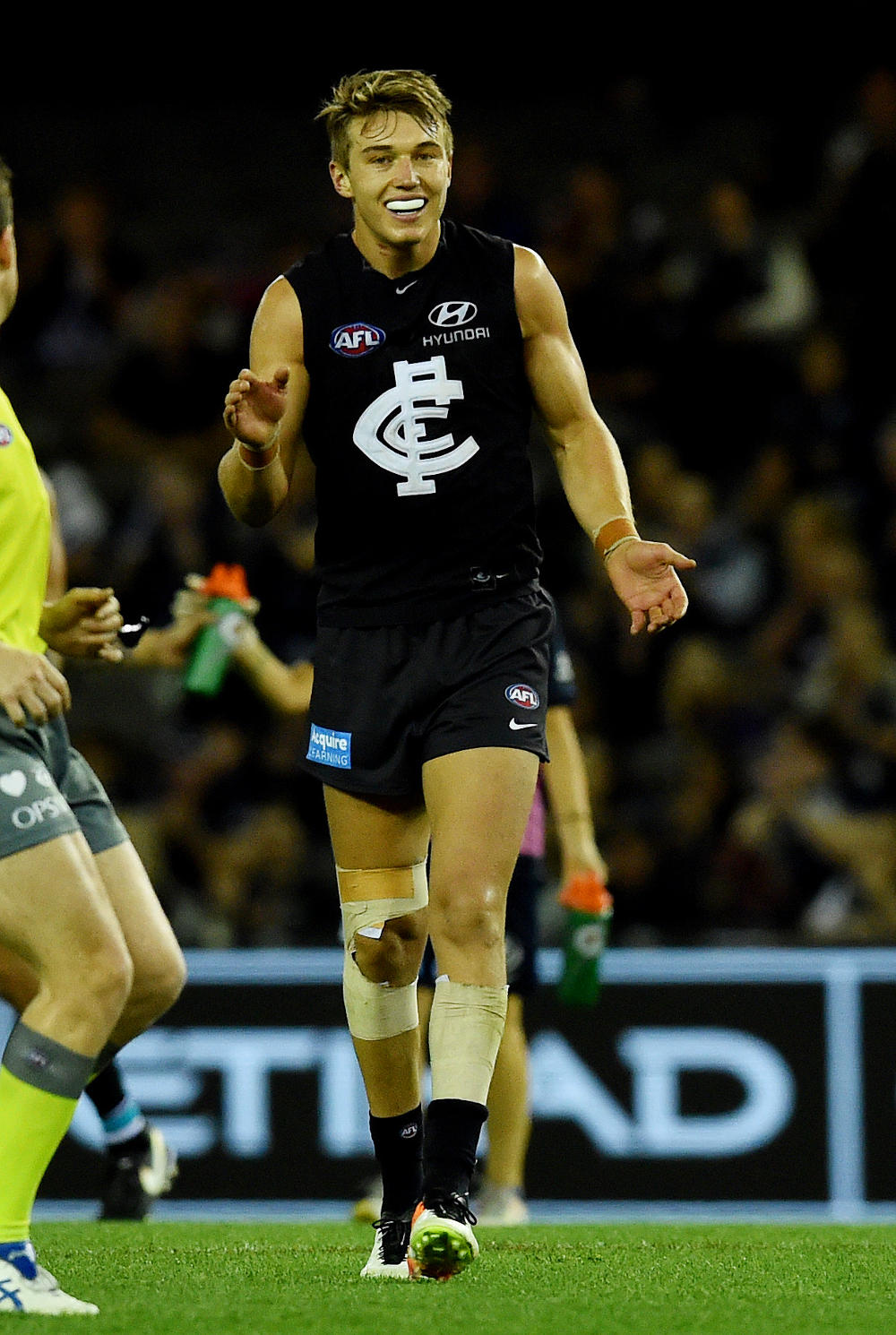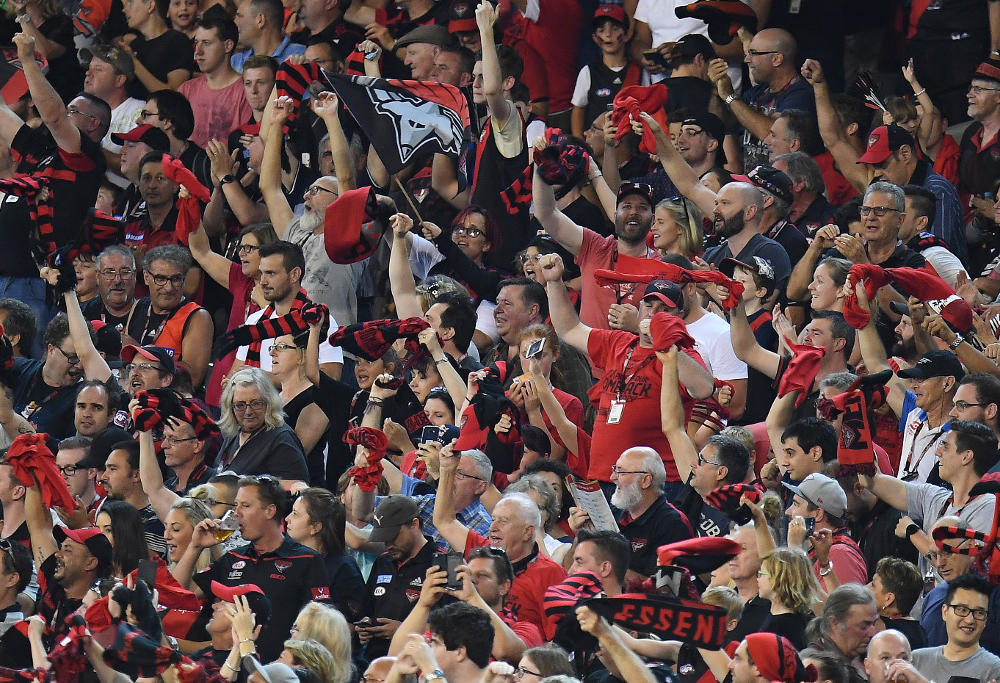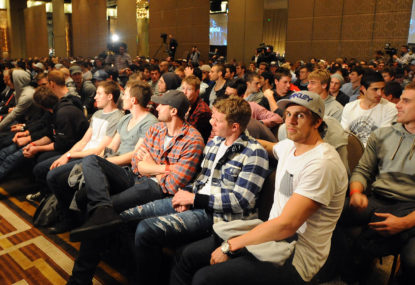The AFL and its players reached a six-year, circa $2 billion agreement yesterday, after almost 18 months of protracted negotiations. It is a profoundly disappointing deal, which does nothing more than spend the league’s newfound bounty.
This column was intended to be a deep dive into the nuts and bolts of the AFL’s new collective bargaining agreement. Something in the spirit of the column I wrote in February 2016, when the league and the AFL Players Association were set to kick off negotiations scheduled to concluded in a few months.
Instead, it is a lament.
The AFL and its players had a once-in-a-generation chance to revolutionise the league, modernise its practises, and fix a raft of issues in the player market which have developed over the past few years. Instead, it appears the two parties spent more than a year arguing about how much money each was going to spend.
Spend they will.
The nuts and bolts
As you already know, the salary cap will increase from $10.37 million per club in 2016 to $12.45 million per club in 2017 (this year – more on that in a bit). The players have also secured a 3.8 per cent increase in the maximum amount payable under Additional Service Agreements (ASA), with that cap lifting from $1.07 million to $1.11 million.
It’s a small increase, but every dollar counts. It means the Total Player Payments cap for the 2017 football year is $13.55 million, up from $11.44 million.
From there, the cap growth is much more meagre. The salary will increase by 1.2 per cent in 2018, 1.3 per cent in 2019, and two per cent per annum in the three years through 2022. The ASA cap increases by three per cent per annum for the remainder of the agreement.
According to reports, the AFLPA was successful in achieving its number one objective: securing a fixed proportion of certain AFL revenue for its players. Collateral produced by the AFLPA suggests the players will receive 28 per cent of league-wide revenue, excluding some sources of club revenue (mostly gaming revenue, and donations).
In this spirit, the league conceded the PA’s second key consideration: an agreement that the players would receive a slice of any unbudgeted revenue, to be paid to the player retirement fund (which itself has been boosted significantly, and resulted in an increase in player retirement benefits).
This is key, and the first instance of where not having the agreement itself to parse is an issue. It is not clear whether the AFL has actually conceded to the players on the issue of them earning a fixed share of revenue, or whether they have agreed to dollar amounts which look like a fixed share.
That’s a matter of detail, but could hint at reasons why the rest of the agreement is a bit bland.
The AFLPA is claiming it as a huge win. Indeed, it is the only material detail they wanted to convey at yesterday’s press conference.
It wasn’t all, of course. Other interesting information released includes:
- All Category A rookies will be available to play from Round 1, 2018. Under the previous agreement, up to two rookies could be nominated as available to play, and others had to wait until a listed player was placed on the long term injury list.
- Players no longer have to pass through restricted free agency before becoming an unrestricted free agent. This is a technical one, so bear with me. Under the previous agreement, a player coming out of contract in their 10th year or later who had entered into that contract in their seventh year or earlier was classified as a restricted free agent. That differed to a player who entered into a contract in their eighth year and came out of contract in their 10th – they would have been unrestricted free agents. That technicality has been ironed out; any player with ten years of service at one club is now an unrestricted free agent.
- Minimum salaries have been increased across the board. The listed player minimum salary has increased from $84,465 in 2016 to $100,000 (18.4 per cent), rookie minimum from $57,940 to $71,500 (23.4 per cent), and first round pick base salary from $74,740 to $88,000 (17.7 per cent). Out of interest, AFLPA CEO Paul Marsh said at his press conference that players at the bottom end of the salary scale would get increases that were greater than the league-wide salary increase. Those amounts increase again in 2018 to $105,000, $75,000 and $95,000 respectively. Over the two-year period, those benchmarks increase by more than the overall salary cap – just.
- A raft of new spending on player education, welfare and health. The are too many changes to this area to mention, but suffice to say the Players Association has feathered its own nest nicely in this respect – it is set to receive significantly more funding to deliver non-football programs to players over the term of this agreement
That’s what we know now. It’s significant, but not everything. Indeed, we should all be far more interested in what wasn’t achieved in this negotiation period.
[latest_videos_strip category=”afl” name=”AFL”]
Be like the shark
The AFL and its players have failed to grasp the nettle of reform, and have condemned the league to another five and a half years of archaic player regulations which will inevitably come back to haunt it.
As best as we can tell from the information which has been released, there has been no change to practically every rule regarding player listing and movement in the new CBA.
The players retain their anachronistic and absolute right to veto any trade.
Draftees remain committed to their first club for two years and two years only.
The rookie list is still a thing, despite Category A rookies (which is 90 per cent of rookies) being allowed to play at any time.
Free agency remains available to far too few players for it to be a meaningful part of the player movement system.
Players not already in the AFL system can still only join through a draft, and delisted free agents only their status for the few months after they are delisted.
There was no meaningful reform to modernise player listing, management and movement regulations. There will now be no meaningful reform to modernise player listing, management and movement regulations until at least 2022.
It will mean clubs will still be held to ransom by players who demand to be traded to particular clubs. It will mean non-traditional football states will continue to have less than 18 months to convince their Victorian-origin players to sign beyond their draft contracts. It will mean the frankly ridiculous distinction between a fully listed player and a rookie listed player remains.
The AFL and its players couldn’t even agree on proposals regarding free agency in time for the announcement. Three options are on the table, and the AFL has decreed that the players will have to pick one: lifetime free agency (once you earn free agent status in year eight, you are a free agent for the rest of your career when you come out of contract), portable free agency (the service limits of eight and ten years are career-based, not club-based) or early free agency (a new type of free agency for players earning below the AFL average wage in year four of their career).
They are all meritorious options, although the third is on the radical end of the spectrum and could throw up all sorts of strange outcomes. The first two are no-brainers and should be implemented in tandem; the players will get one of them. Frankly, it’s absurd.
On face value, it appears player movement was barely discussed during this round of CBA negotiations. That should come as a surprise to us all. Both parties have squibbed a genuine opportunity to modernise player regulations.

AAP Image/Tracey Nearmy
I am Bender, please insert girder
The other disappointing outcome of this CBA negotiation is there appears to have been no removal of restrictive regulations regarding player access and other information sharing. That goes beyond players having greater opportunity to share their human side – a topic which has received great attention over the past few days.
The 2015-2016 CBA contains almost 20 pages of regulations regarding player access, appearances, broadcast policies, licensing of their likeness and other matters of branding. The new agreement looks set to usher in additional regulations, which could hinder our ability to better understand and enjoy the softer side of the league.
Not only that, the players have bargained for a review or something similar of privacy related to their performance data. This is troublesome. The AFLPA has made a bunch of noise in recent months about the AFL’s desire to see player GPS data used in broadcasts. The AFLPA was is on the record as holding out against this, concerned that the information might be used to highlight player weaknesses.
What a crock. It is no different to a player being criticised for not kicking a goal or having fewer possessions than their career average.
This, plus the PA’s continued reticence to divulge any material related to player contracts, leaves the paying fans poorer. It reduces the richness of coverage and analysis of the game, and helps contribute to the misinformation and disinformation that is increasingly spread by media organisations desperate to find things to say about players and clubs.
Given the way all of this is regulated, the AFL and its players had a golden opportunity to help chart the way forward. Instead, conservatism once again reigned supreme. We will be poorer for it.

AAP Image/Julian Smith
So what?
This column can’t just be a rant railing against what didn’t happen. Things still clearly changed, just not at all to the extent that they certainly could have and perhaps should have.
My concerns are not that the AFL should have made change for the sake of change. Ultimately, the fact things didn’t change is in itself revealing – both parties placed great stock in the need to spend the league’s bounty, and were obviously comfortable that the current rules and regulations across the rest of the league were fine as they were.
The reason to change these things is to enhance the competition; give the clubs and those who run them the tools to be more competitive and more cunning and smarter and better than their opponents.
It’s the same for player access and other off-field features of the game. It isn’t about the players, who will on average take home close to $400,000 per annum by the end of this agreement. It’s about providing the paying customers – the fans – with a richer experience.
I disagree, but here we are.
Without the full agreement to parse, we can only react to what we see in front of us. There will be change, mostly as it relates to the impact of the large increase in the salary cap in 2017.
Please note, the 20 per cent increase in the salary cap is for this football year. It does not mean every club has an extra $2 million to spend on players in the coming off season. It does mean every club will have to pay its currently-listed players more than they had planned; in October last year the AFL told the clubs to plan for a 10 per cent increase in the cap for this season.
So clubs who may have been managing a tight salary cap will have a bit of extra breathing space. How much will depend on a few things.
First, many outlets have reported large swaths of the playing group had negotiated for their salaries to increase in line with the salary cap. That means they will get an automatic bump of 20 per cent. That will absorb a large chunk of the extra increase.
Second, the CBA requires clubs to pay their players a minimum of 95 per cent of the salary cap and ASA allowance each year. 95 per cent of Total Player Payments is $12.9 million. Taken in conjunction with the AFL’s advice to plan for a 10 per cent lift in the cap – which would have taken the 2017 TPP cap to $12.6 million – and it means many clubs will only be required to spend an extra $300,000 in 2017 than they otherwise would have.
It is something, but hardly enough to go on a spending spree.
Clubs will be able to take that up to five per cent amount they bank and spend it on next year’s salary cap instead, which could result in some clubs making some silly-sounding deals for players work within the economic parameters of the new CBA. The maximum amount a club can bank from this year’s salary cap is $680,000, which they can take forward and spend in the next football year. If that’s the case, said club would see its TPP cap increase from $12.9 million to $14.4 million in 2018, before it fell to $13.9 million in 2019.
Big signing bonus, anyone?
That’s a long way of saying the salary cap bonanza many have foreshadowed is likely to be less explosive than we think. There will still be some large deals handed out this year, because the 20 per cent bump in the cap is carried forward, but I expect the volume of deals made will not be significantly higher than usual.
The clubs that will be in the strongest position to capitalise are those who have plenty of players coming off contract in the 2017 year. They will have greater flexibility to shape their club-wide total player payments than clubs without many players coming off of contract, and liquidity leads to deal. It could however be a double-edged sword, because it will mean players who are off contract will be likely targets of other clubs who have some extra cash.
Without proper information on who has signed where, until when and for how much it is difficult to provide much more insight.
For now, two things are clear. There is a pile of extra money being forced down the AFL player pipe, which will lead to some volatility in the market over the next year or two as we bed down the new salary structure of the league.
But more importantly, and on a disappointing note, many of the worthwhile reforms to the league which were right there within the grasp of the players and administrators alike will be left to wither on the vine.
Money talks – perhaps a little too much.































































































